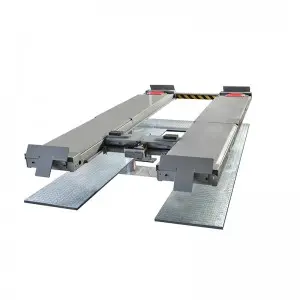In the world of automotive service, having reliable equipment is crucial for the efficiency of any repair shop or garage. Among various types of lifting equipment, inground lifts stand out for their functionality, durability, and space-saving design. This article delves into the benefits of inground lifts, the installation process, necessary maintenance, and why they are a preferred choice for automotive professionals and enthusiasts alike.
What is an Inground Lift?
An inground lift is a type of vehicle lift that is installed below ground level. Unlike traditional floor lifts that occupy space above the ground, inground lifts are designed to be flush with the surface, allowing for unobstructed access to the vehicle beneath it. Typically, these lifts can handle a variety of vehicles, from passenger cars to larger trucks, making them a versatile addition to any automotive service center.
Benefits of Inground Lifts
1. **Space Efficiency**: One of the most significant advantages of inground lifts is their minimal footprint. They do not take up space above ground, allowing for more room for vehicles, tools, and personnel to work. This is especially beneficial in smaller garages where space is at a premium.
2. **Enhanced Safety**: Inground lifts generally incorporate safety features such as automatic safety locks, ensuring that the vehicle remains securely in position during servicing. This setup minimizes the risk of accidents, providing peace of mind for both the technician and vehicle owners.
3. **Versatility**: These lifts can be used for various types of vehicles, including sports cars, SUVs, and light-duty trucks. With the right hydraulic capacity, an inground lift can accommodate many different vehicle sizes and weights.
4. **Improved Workflow**: With inground lifts, technicians can move around the vehicle without the obstruction of a traditional lift. This allows for a more streamlined workflow, minimizing the time spent on each repair and increasing productivity.
5. **Durability and Longevity**: Built to withstand the rigors of daily use, inground lifts are typically constructed from robust materials that can withstand heavy loads without compromising performance. Many models are resistant to corrosion and wear, which extends their service life.
Installation Process

Understanding Inground Lifts: Benefits, Installation, and Maintenance for Automotive Professionals and Enthusiasts
The installation of an inground lift is a complex procedure that requires meticulous planning and execution. It is essential to choose a location that is suitable for the lift’s dimensions and weight capacity. Here’s a brief overview of the pertinent steps:
1. **Site Preparation**: The installation area must be cleared and leveled. This often involves digging a trench that will house the lift mechanism comfortably.
2. **Assembly**: After excavation, the lift components, which typically include hydraulic cylinders, beams, and safety locks, are assembled on-site according to the manufacturer’s instructions.
3. **Wiring and Plumbing**: Professional installation also involves connecting power and hydraulic lines. It’s crucial these connections are made correctly to ensure optimal performance.
4. **Finishing Touches**: Once the lift is installed and tested, the area around it may need to be repaved or covered with flooring to match the rest of the garage surface.
Maintenance of Inground Lifts
Regular maintenance is imperative to prolong the life of an inground lift and ensure it operates safely. Here are key maintenance tips for automotive professionals:
1. **Routine Inspections**: Technicians should regularly inspect the lift for signs of wear, leaks, or any unusual noises during operation. Early detection of problems can prevent larger issues down the line.
2. **Hydraulic Fluid Checks**: The hydraulic fluid should be checked and replaced as necessary to ensure optimal performance and avoid potential system failures.
3. **Safety Mechanism Testing**: Safety locks and other mechanisms must be tested to ascertain they are functioning correctly, preventing any accidents while vehicles are elevated.

Understanding Inground Lifts: Benefits, Installation, and Maintenance for Automotive Professionals and Enthusiasts
4. **Cleaning**: Keeping the lift clean and free from debris will help maintain its functionality and prevent any unexpected hindrances during service.
Conclusion

Understanding Inground Lifts: Benefits, Installation, and Maintenance for Automotive Professionals and Enthusiasts
Inground lifts are a valuable investment for anyone involved in automotive repairs, offering numerous benefits, including space efficiency, enhanced safety, and versatility. Proper installation and ongoing maintenance are critical to maximize the potential of these lifts. For both automotive professionals and enthusiasts, integrating an inground lift into a workshop can lead to improved workflow and productivity, making it an indispensable tool for a successful automotive service operation.Quick Lift
